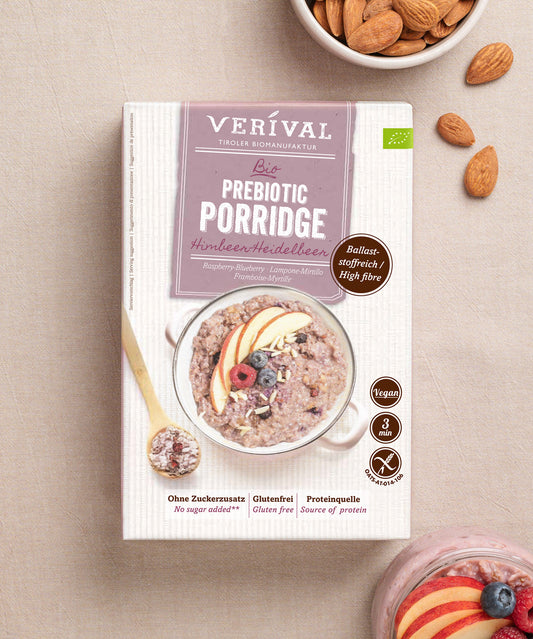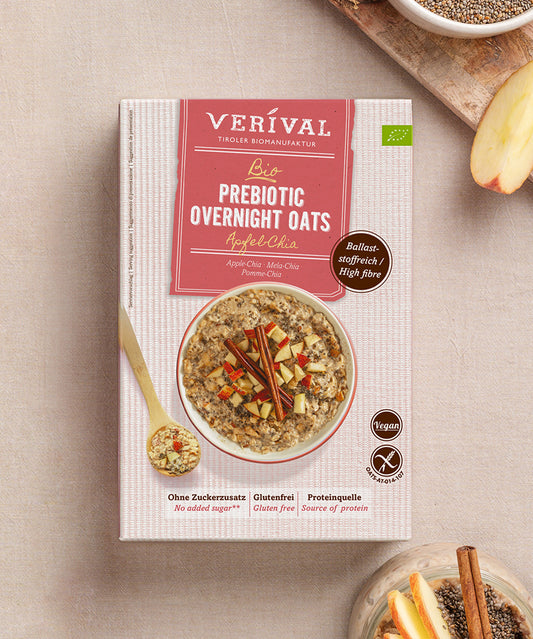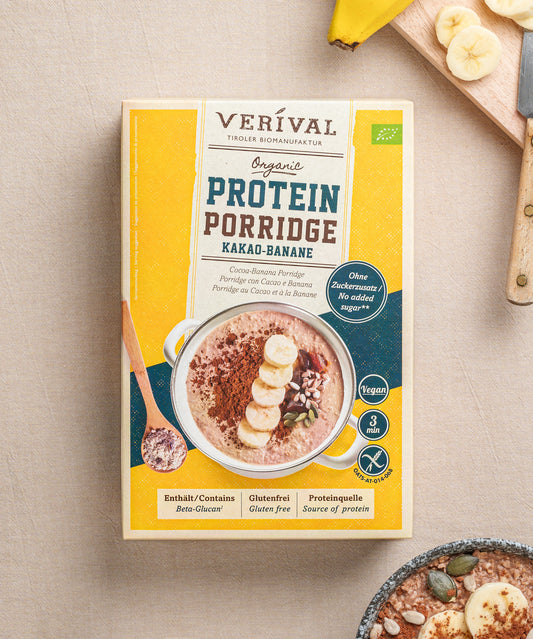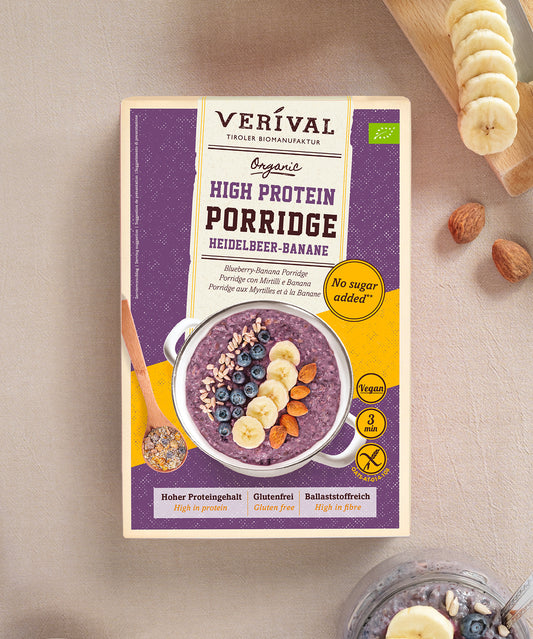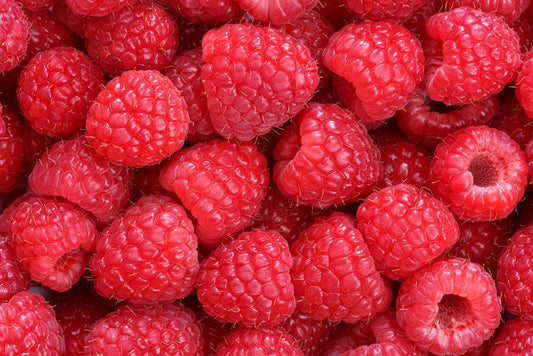The slow carb diet is currently all the rage. Slow carbs are complex or slow-release carbohydrates. These are supposed to keep blood sugar levels as constant as possible. This is thought to result in long-lasting satiation, protection against food cravings and improved fat loss. But how much truth is there to these claims? In this blog post, we will take a closer look at the topic of slow carbs.
How to have a healthy breakfast – find out more
What are slow carbs anyway?
Slow carbs, or slow carbohydrates, are currently very much in vogue. The so-called slow carb diet is therefore about choosing carbohydrates that are slow to digest. These are complex carbohydrates that differ from simple sugars in terms of their chemical structure. They have a significantly longer molecular structure.
In technical jargon, they are referred to as so-called complex polymers, which include oligo- or polysaccharides. ‘ Fast carbohydrates’, on the other hand, include simple sugars such as mono- and disaccharides.
Monosaccharides (simple sugars) include familiar representatives such as glucose, fructose and galactose. When two molecules of monosaccharides combine, they form disaccharides, also known as disaccharides. Familiar representatives of this carbohydrate group are lactose, sucrose and maltose.
The chemical structure of oligo- and polysaccharides is significantly more complex. They consist of three to nine monosaccharide molecules or more than nine monosaccharides.
This may sound a bit theoretical and of little practical significance at first, but it is not. This is because the chemical structure has a decisive influence on the utilisation and thus effect in the body .
This is how complex carbohydrates affect your body
Complex carbohydrates are known to be healthier than their quickly available counterparts. But why is that? What is actually behind this claim?
Carbohydrates are known to have a significant influence on blood glucose concentration. The scientific term for the body's response to carbohydrates in food is glycaemic index. It has been shown that complex carbohydrates cause blood sugar levels to rise less rapidly than simple sugars.
However, it should be emphasised that the chemical structure is only one of several influencing factors. In addition to the molecular structure, the amount of consumed carbohydrates, the type and physical form of the sugar source, and the composition of the meal also have a significant influence on the utilisation and effect in the human body.
For example, it makes a significant difference whether the sugar is glucose, fructose or galactose. On the other hand, the physical form of the carbohydrate source is also important – this is primarily dependent on the processing. For example, it makes a difference whether you eat your oats raw in muesli at breakfast or in a swollen form in porridge.
How to make the perfect porridge
However, the most important influence is probably the actual meal consumed, with all its components. In addition to the amount of carbohydrates consumed, it is important to consider the fat and protein content, the amount of fibre in the meal and what other foods are included in the meal. For example, legumes contain amylase inhibitors that cause blood sugar levels to rise less sharply.
These are the most important sources of complex carbohydrates.
The best sources for healthy blood sugar levels are therefore those that are complex in structure and rich in healthy fibre, healthy fatty acids and proteins. In addition, it is recommended to include healthy legumes in your daily diet.
This is because fibre, fats and proteins all ensure a longer stay in the stomach and thus a delayed absorption of sugar into the bloodstream. This not only ensures a smoother blood sugar response, but also a longer-lasting satiety and an optimised energy supply.
The following list shows the most important sources of complex carbohydrates.
- Wholemeal pasta and wholemeal flour
- Beans, lentils and peas
- Quinoa, bulgur wheat and buckwheat
- Oats and oat bran
- Nuts and seeds
To help you prepare meals full of complex carbohydrates, we have put together two delicious and healthy recipes:
Hazelnut-chocolate baked oats
Preparation time 10 mins
Cook time 30 mins
Total time 40 mins
Serves 4
Ingredients
- 80 g Verival Sport Porridge Chocolate Banana
- 110 g oat flakes
- 300 ml vegetable milk
- 1 egg
- 2 tbsp maple syrup
- 1 tsp baking powder
- 1 pinch of salt
- 1 tsp cinnamon
- 1 tbsp cocoa powder
- 50 g grated hazelnuts
Preparation
- Preheat your oven to 190 degrees.
- First, put the porridge, oats, baking powder, salt, cinnamon, cocoa powder and hazelnuts in a baking dish.
- Next, put the plant-based drink, egg and maple syrup in another bowl and mix everything together well.
- Then mix the mixture from the bowl with the dry ingredients.
- Finally, you can put the baking dish in the oven and bake the porridge for 30 minutes.
- After the baking time, you can take the porridge out of the oven, let it cool briefly and then enjoy.
In these two recipes, oat flakes and wholegrain oat groats in the Verival Sport Porridge provide plenty of complex carbohydrates and digestive fibres. The protein-rich chia seeds also provide an extra portion of dietary fibres. The recipes are rounded off with healthy sources of fat such as nuts and seeds.
This is what simple carbohydrates do in the body
Simple carbohydrates, such as simple and double sugars, can be quickly utilised and channelled into the bloodstream due to their shorter chemical structure. From there, they reach the organs that depend on carbohydrates. However, the disadvantage of quickly available carbohydrate sources is that they cause the blood sugar level to rise rapidly.
The insulin response is correspondingly strong, which can lead to long-term health problems. These include diabetes mellitus type 2, overweight and their potential secondary diseases.
However, when it comes to overweight and obesity, the type of carbohydrates is only part of the problem. It is more about an excess of calories – that means that you are feeding your body more calories than it actually needs. To determine your individual energy needs, you can use a so-called calorie calculator. Based on the data you enter, calorie calculators calculate the amount of calories that your body actually needs.
If you want to avoid diet-related illnesses, you should therefore try to incorporate fast carbohydrates into your diet in a targeted and well-measured manner. In addition to their function as sweeteners in recipes, they are easy to digest and quickly available, which makes them popular training companions, especially in sports circles.
Carbohydrates in sports – what do I need to consider?
In principle, the same applies to athletes as to non-athletes. The majority of carbohydrates should be consumed as slow carbs. This ensures a more optimal energy supply throughout the day, which can increase performance and prevent unnecessary ravenous attacks.
However, just before, during and after training, the situation is somewhat different. This is because when doing sports, it is important that food does not stay in the stomach for too long. If it does, performance suffers greatly.
This is because digestion requires a portion of the blood, leaving less available for the working muscles. As a result, the transport of important molecules in the blood to the skeletal muscles is suboptimal, which demonstrably reduces performance.
How to achieve maximum performance during sports
To be full of energy and perform well during sports, you should therefore ensure that your diet is as ideal as possible around the time of your workout. The rule of thumb is: small amounts of fats and fibre, but plenty of quickly available carbohydrates and proteins.
A meal shortly before training is not necessary in most cases. Only if it has been many hours since your last meal and you need a little energy at short notice, it can be helpful to have a small pre-workout meal.
This should be easily digestible and deliver fast energy and proteins. You should save fats and fibres for meals outside of your workout, as they extend the time the food spends in your stomach.
These are the most important sources of protein for endurance athletes
During training, it can be beneficial to consume a specific amount of quickly available carbohydrates, especially if the training session lasts longer than an hour. This is best done in the form of a sports drink, which you can either buy or prepare yourself. Ideally, the sports drink should be isotonic. This ensures improved absorption of nutrients and less strain on the digestive tract.
A good sports drink mix contains 750ml of water, 250ml of fruit juice and a pinch of salt, which you should ideally take in sips. The sports drink is full of important nutrients for athletes, which can help to prevent muscle cramps and protect carbohydrate stores.
After training, the rules of thumb are still the same. You can now increase the amount of protein to kickstart and optimally support your recovery. However, you should still avoid fat and fibre shortly after training, as your muscles need a large amount of blood.
For all meals apart from training, however, the following applies: plenty of complex carbohydrates, healthy fibre, a healthy portion of protein, plenty of micronutrients and healthy fatty acids. After all, all of these components ultimately contribute to optimised recovery and a healthy lifestyle.





